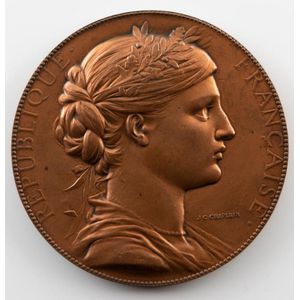Timber Veneer Rectangular Side Tables with Chips
You must be a subscriber, and be logged in to view price and dealer details.
Subscribe Now to view actual auction price for this item
When you subscribe, you have the option of setting the currency in which to display prices to $Au, $US, $NZ or Stg.
- Veneers - Veneers are thin sheets of well-figured timber that are glued under pressure to the surface of a cheaper timber for decorative effect, and then used in the making of carcase furniture.
Early veneers were saw-cut so were relatively thick, (up to 2 mm) but is was realised that saw cutting was wasteful, as timber to the equivilent of the thickness of the saw was lot on each cut.
A more efficient method was devised to slice the timber, either horizontally with a knife, or in a rotary lathe.
Flame veneer, commonly found in mahogany or cedar furniture, is cut from the junction of the branches and main trunk. So-called fiddleback veneers, where the grain is crossed by a series of pronounced darker lines, is usually cut from the outer sections of the tree trunk.
During the 17th and 18th centuries, and in much of the walnut marquetry furniture made during the latter part of the 19th century, the veneer was laid in quarters, each of the same grain, so that one half of the surface was the mirror image of the other.
The use of veneer allows many other decorative effects to be employed, including stringing, feather banding, cross banding, and inlaid decorative panels in the piece. The carcase over which veneer is laid is usually of cheaper timber such as pine, oak or, sometimes in Australia during the first half of the 19th century, red cedar.
The important thing to remember about veneers is that prior to about 1850 they were cut by hand, and were consequently quite thick - ranging up to about 2mm deep.
From the mid-19th century veneers were cut by machines and were almost wafer-thin. This is a critical point when trying to judge the approximate age of veneered furniture.
This item has been included into following indexes:
Visually similar items

An Omega Speedmaster chronograph wristwatch, automatic movement, circular black dial with illuminated baton numerals, subsidiary dials, sweep seconds hand, signed case, dial and movement, stainless steel case with conforming bracelet bands, 38 mm diameter

A topaz and diamond dress ring, the wide reeded band centred with an oval topaz within a floral style diamond set surround, in 18ct white gold, ring size O-P

International Exposition of Electricity, Marianne bronze medal by Chaplain; 69 mm, 147g. The first International Exposition of Electricity in Paris ran from August 15 to November 15, 1881 at the Palais de l'Industrie on the Champs-Elysees. It served to dis

A sapphire and diamond pendant, reversible heart shape, set in 9 carat yellow gold. Weight 1.5g
